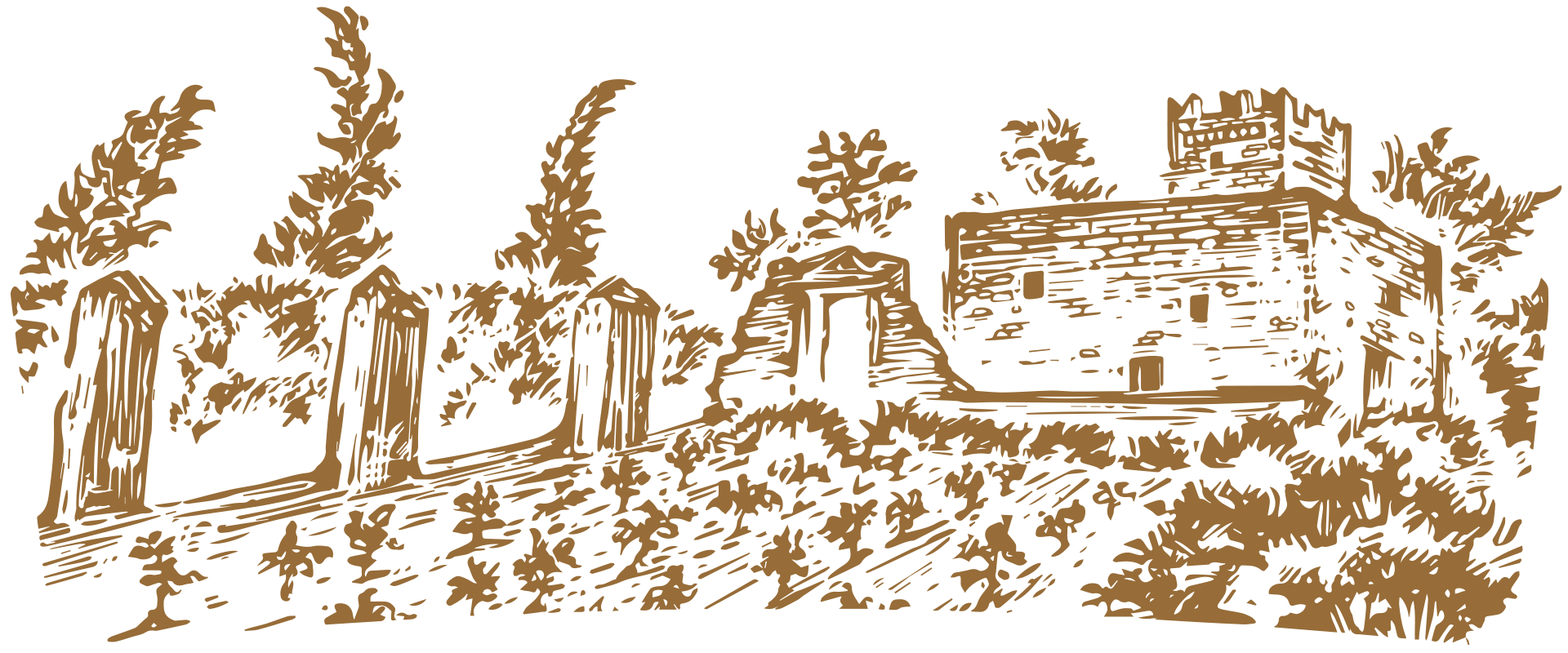Traditional viticulture in mountainous naxos
“Kílisma”(ploughing), “Fythía”(planting), “Katavoláda”(grapevine layering), “Klimatózoma”(harvesting) – the people of Naxos mark the year with the tasks of caring for the vineyard.
Most families cultivated vineyards, stretching from the valleys to the mountaintops, building stone terraces (dry-stone walls) among which vineyards were created, one after another.
Even today, these old terraces and many of the vineyards still exist, evoking admiration from visitors for the picturesque landscape and the tireless toil and patience of those people who managed to tame nature.
The locals derive the word “ampéli” (vineyard) from “belás” (trouble), due to the continuous care it requires in order to yield its fruits.
The planting of new vines was and continues to be done in a field, usually after cultivating cereal crops, which they prepare by “Kílisma” digging during the winter months, with “Ampelaksíni” in a depth of 0.50m-0.60m.
Often, they encounter hard rocks and even iron fragments during the digging, which they have to break using a pickaxe.
They uproot the wild grass and leave the clumps of soil that have come to the surface during digging to “bake” under the summer sun, allowing them to break down with the help of rain in the autumn.
They use the stones they gather from the field to complete the terraces.
The planting of new vines “Fythía” (direct planting) takes place at the end of January, after working the field again with the “Ampelaksíni”. Vine stakes are also planted, typically in narrow holes, by kneeling them in the bottom of the hole to form an angle and then standing the rest upright towards the surface of the soil, with about 0.30m protruding above the ground.
Another method of planting is through “Katavoláda”, which is commonly used to replace an aged or dried vine. In this method, a hole is opened in the space between the old vine and the adjacent healthy vine. From the root height of the adjacent healthy vine, they take a vine shoot, which they carefully lean inside the hole until the point where the old vine existed. They then press the vine shoot into the soil, compacting it well, and it will develop its own roots. Eventually, they will separate it from its “mother” vine.
Another method of vineyard renewal is through “Bóliasma,” which is done in late February to early March. During this process, the majority of the shoots are pruned and sharp knives are used to graft a section of a shoot from another plant onto the vine shoot. They secure the grafting point with twine or cloth.
Traditionally, vineyard care involved “cleaning” during the months of November to December, after the leaves have fallen. They remove excess shoots from the vines and then prune the trunk. The vines are fertilized with buried goat and sheep manure.
In January, they prune by cutting weak vine shoots and leave two to four canes with three to four buds each, depending on their age. The old tradition was to prune during the days when the moon was in its waning phase or when there was no moon at all, as they used to say: “January prune, moon do not look”.
Women and children gather the cut shoots, they “Klimatomazónoun” (collect vine shoots), to use them for kindling the hearth or oven and to light large fires in front of the churchyard on the night of Holy Saturday, along with other pieces of wood.
In the months of March and April, digging and hoeing takes place. During the same period, wild weeds must be removed from the vines, along with any useless parasitic shoots and excess leaves. Trimming is done to strengthen the remaining stems.
After bud break, the first thinning is carried out, followed by the second thinning when the grapes start to bloom, and the third thinning after fertilization when the fruits grow larger.
During the summer, either the grapes are covered with vine shoots to protect them from the intense sun or leaves are removed from other vines with dense foliage to free the fruit and expose it to light.
The first ripe grapes are called “early-harvest.” Saying “I harvested the grapes” means they have ripened, and July is the month of harvest. “Liátiko” refers to black grapes that are early-harvested. In the past, it was customary to bring them to the church on August 6th, the day of the Transfiguration.

THE LOCAL VARIETIES OF NAXOS
The local varieties of Naxos include “Angelómachos” (named after the Sideritis variety that “fights its angel,” meaning it fights Charon, the ferryman of Hades, because it’s tough tendrils almost suffocate you when encountered in the vineyard), the “Voudómato”, the “Mandilariá” with black tendrils, the “Áspromandilaria”, the “Fláska”, the “Psoriátiko”, the “Aetoníhi”, the “Aidáni”, the “Bastardaídano”, the “Assyrtiko”, the “Asprosíriko”, the “Bastárdiko”, the “Eftákoilo”, the “Koufóro”, the “Moscháto”, the “Potamísi”, the “Rodítis”, the “Rozakó”, the “Frangostáfylo”, the “Harambraím:, the “Psilórróo”, the “Asprochiótiko”, the “Stavrochiótiko”, the “Egarítiko”, the “Kerasáto”, the “Kydonáto”, the “Platáni”, the “Siríki”, the “Finéri”, and the “Fokianó”.
Harvesting must be done at the right time, neither when the grapes are not fully ripe nor when they are overly ripe. Αs the Naxians say, “If the harvest is not done in its proper time, then the wine turns into vinegar.”
They select many good grapes, “aidánia” and “rozaká”, and create “kremastária” (hanging bunches) by hanging them with twine or cloth on nails in the rafters of cellars and houses, so that they can have them during the winter months.
Inside the vineyard, there is a square building called “Léno” with low stone walls and a marble floor, slightly inclined towards another lower structure on one side of the “Léno”, a smaller one called “Ypolénio” or “Polími.” This is where the grape must flow, and the “Trietádes” (the people who collect the grapes), transfer the grapes to be stomped with bare feet, after rolling up their pants to their knees.
Using clay “Laínia” (troughs), they pump the must from the “Ypolénio” and fill the skins. The skins are made of goat leather. There is a small reed in the neck of the skin, which they close with a wooden stick, and every evening they inflate them from the neck and hang them to fill with must throughout the “Trigytós” (fermentation period). At the end of the “Trigytós”, they wash them in the sea.
When the skins are filled with grape must and by twos, they load them onto a donkey and transport them to the village. They come to the house and empty them into the “Krasomethyres”, which are large clay tubs they obtained from the “Tsikalariá,” placed in a row inside the cellar.
The wine vats remain uncovered with the grape must for one month. They are only covered with wild bushes called “Frygana” to prevent anything from falling inside. When the fermentation of the grape must is complete, they are covered with iron lids and sealed with cow dung “Voudiá.”
There were also “grape vats” for all the solid residues from the pressing of grapes called “Strofyliá”. The “Strofyliá” are piled up inside the cistern and the pile is wrapped with vines to prevent them from scattering. Heavy stones are placed on top, which, by pressing the “Strofyliá”, allow the flow of good-quality wine, which is stored separately.
The “Strofyliá” are also transferred into barrels and placed in cisterns, where they will remain for ten to fifteen days. Then they will be put into distillation cauldrons called “kazanémata” to produce tsipouro.
With the grape must, they also make must flour and grape molasses.
The wine is extracted from the cisterns/wine vats using a “soufounokálamo” (siphon tube).
The “Sifouni” is a traditional ceramic vessel from Naxos that is used for dual purposes. They extract wine from the cisterns/wine vats using a “soufounokálamo”, the upper end of which is fitted into the lower hole of the siphon, and they sip the wine from the upper opening. The mechanical design of the siphon is such that, after using it as a siphon, it serves as a wine jug, and when it is empty, it is filled again in the same way.

The sediment of the wine in the vat is called “nyli.”
In vineyards, there are usually “mitatoi” (stone houses) that are used for resting during the cultivation and harvesting period, as well as for storing essential agricultural tools.
They often make improvised wooden crosses, place an old undergarment on top and fill it with grass, which they call a “Skiáhtro” (Scarecrow). They then stick it into the ground in the vineyard to scare away birds.
Common trees found in vineyards are fig trees (wild figs, green figs, black figs), quince trees, sour apple trees and pear trees.
By honouring our island, we maintain constant contact with nature.
Nature bestows her fruits upon us as a gift, and we, at Terra Grazia Estate, strive to express our gratitude to her in tangible ways.
By honouring our island, we maintain constant contact with nature.
Nature bestows her fruits upon us as a gift, and we, at Terra Grazia Estate, strive to express our gratitude to her in tangible ways.

